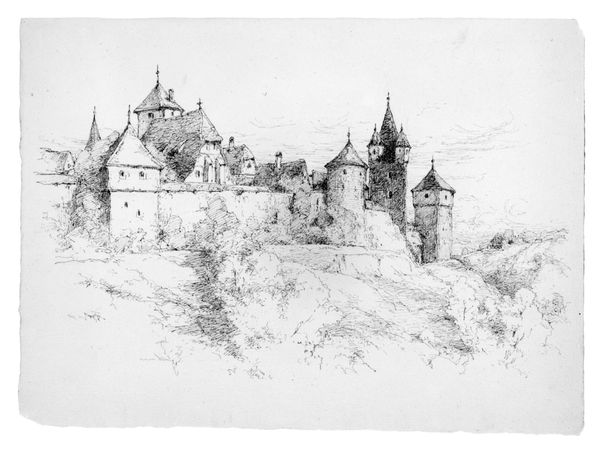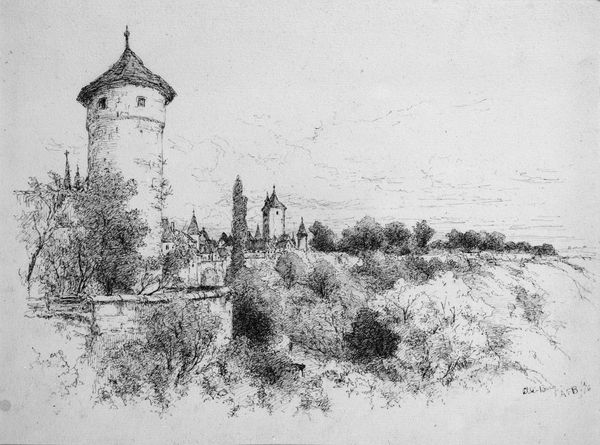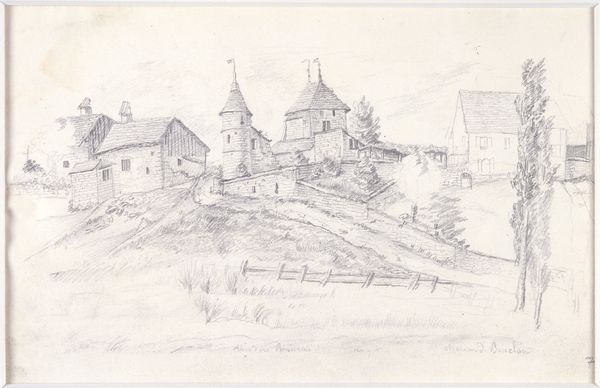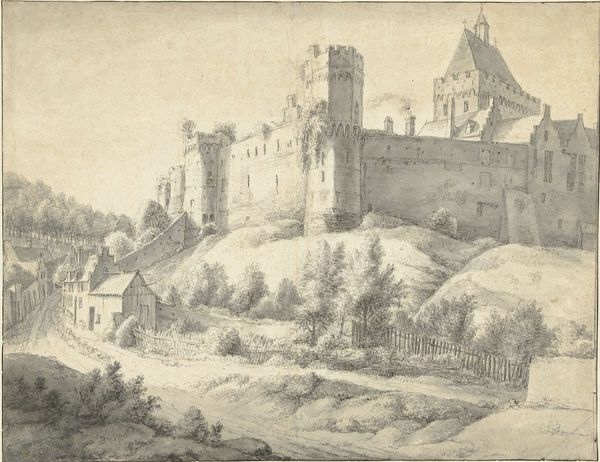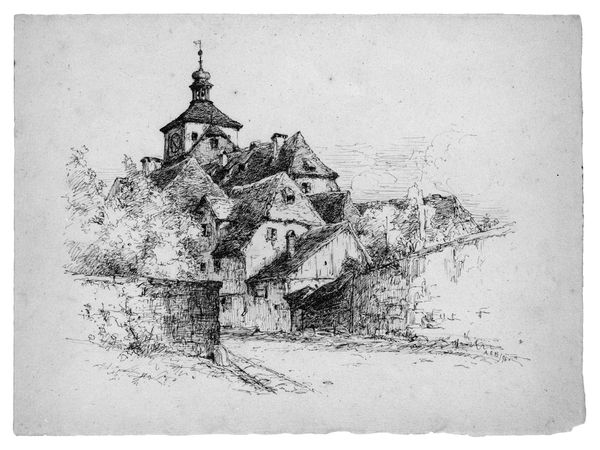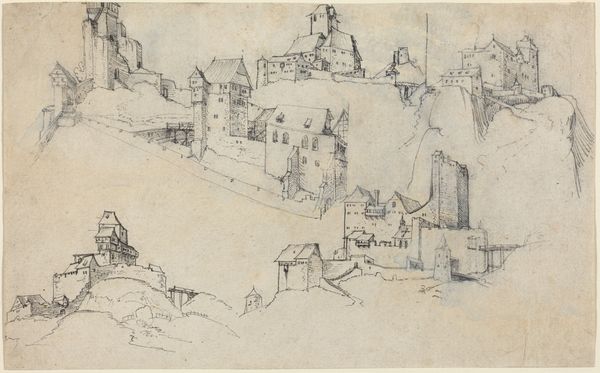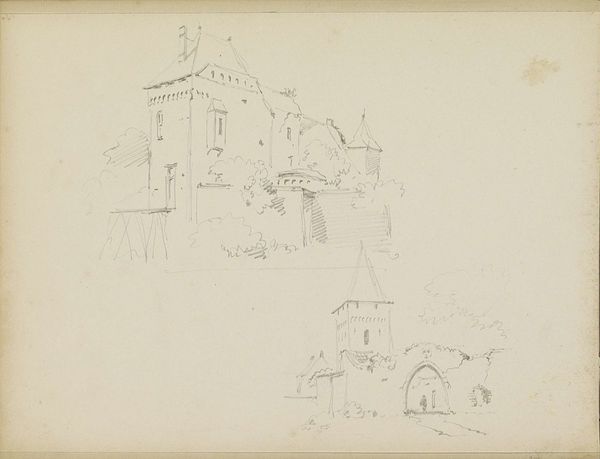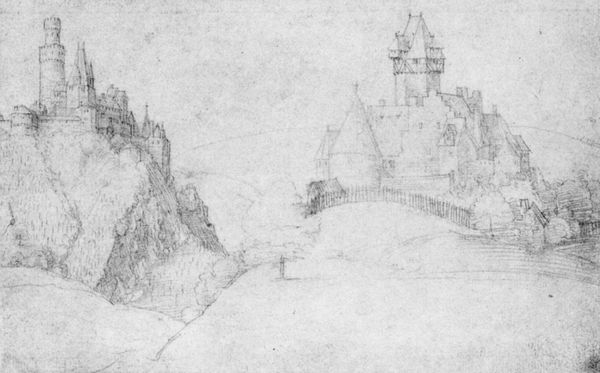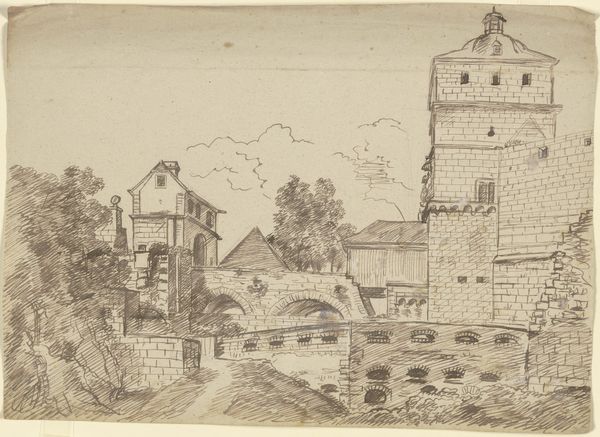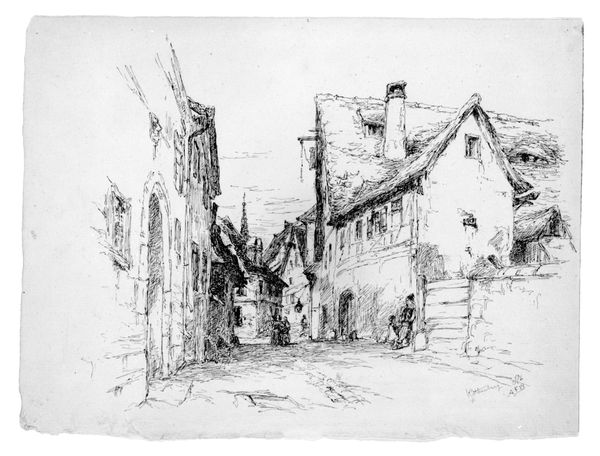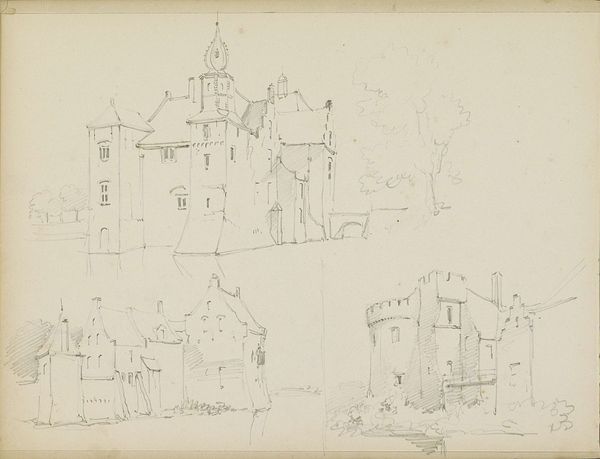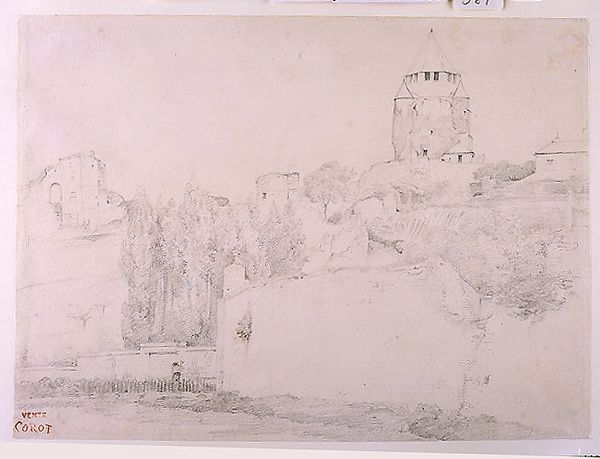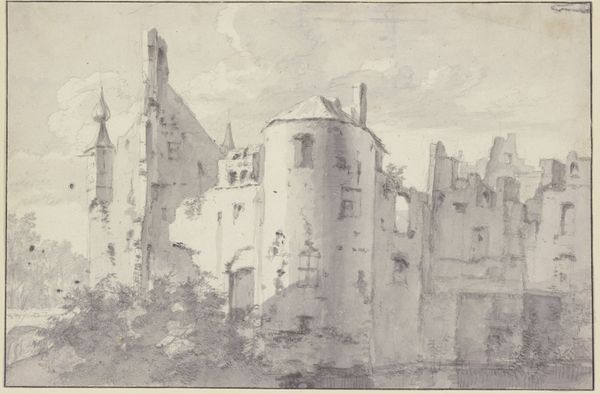
drawing, ink, pen, architecture
#
drawing
#
medieval
#
pen sketch
#
pencil sketch
#
landscape
#
house
#
form
#
ink
#
line
#
pen
#
cityscape
#
architecture
#
realism
Dimensions: 9 3/4 x 13 1/8 in. (24.8 x 33.3 cm)
Copyright: Public Domain
Curator: What a lovely vista. This is Andrew Fisher Bunner’s "Sketch of a Town in Germany," dating from sometime between 1841 and 1897. Editor: It has such a delicate, almost ethereal quality. The lines are so fine, giving it an airiness despite the subject being a fortified town. Curator: Indeed. Bunner, an American artist, likely produced this work as part of his European travels. He's capturing the essence of a specific time, when European artists were reflecting on medievalism and urban identity. This would likely have appealed to wealthy American travelers seeking connections to European culture. Editor: It's fascinating how much detail he achieves with just ink and pen. Look at the rooftops – the varying line weights create depth and texture, almost making them tangible. One really notices how many hands it must have taken to assemble a whole township like this with its towers and gates, thinking about how each of those laborers had to use available natural material from the earth like trees, stone, and dirt. Curator: And the inclusion of architectural features and the composition of city as a whole indicates much about social hierarchies of the moment, what the urban space affords to which inhabitants based on class and governance. He's meticulously documented its physical structure and implied functions for civilians and city administrators. Editor: But consider how time-consuming this process would have been. Each line carefully placed, representing hours of skilled labor, the act of looking at it is remembering that original artisan labor and material constraints. Curator: True, it speaks volumes about the societal values placed on artistic skill and patronage at the time and later as American Gilded Age tastemakers decided which European visions mattered for purchase. Editor: I like how the sketch also embodies ephemerality through its monochrome effect. There is something about using basic materials that reveals how nothing ever truly lasts. Curator: Well, whether viewed as historical record or an exploration of process, it invites reflection on the past and its continued presence. Editor: Agreed. A fine reminder of the skill it once took to depict the places we live.
Comments
No comments
Be the first to comment and join the conversation on the ultimate creative platform.
